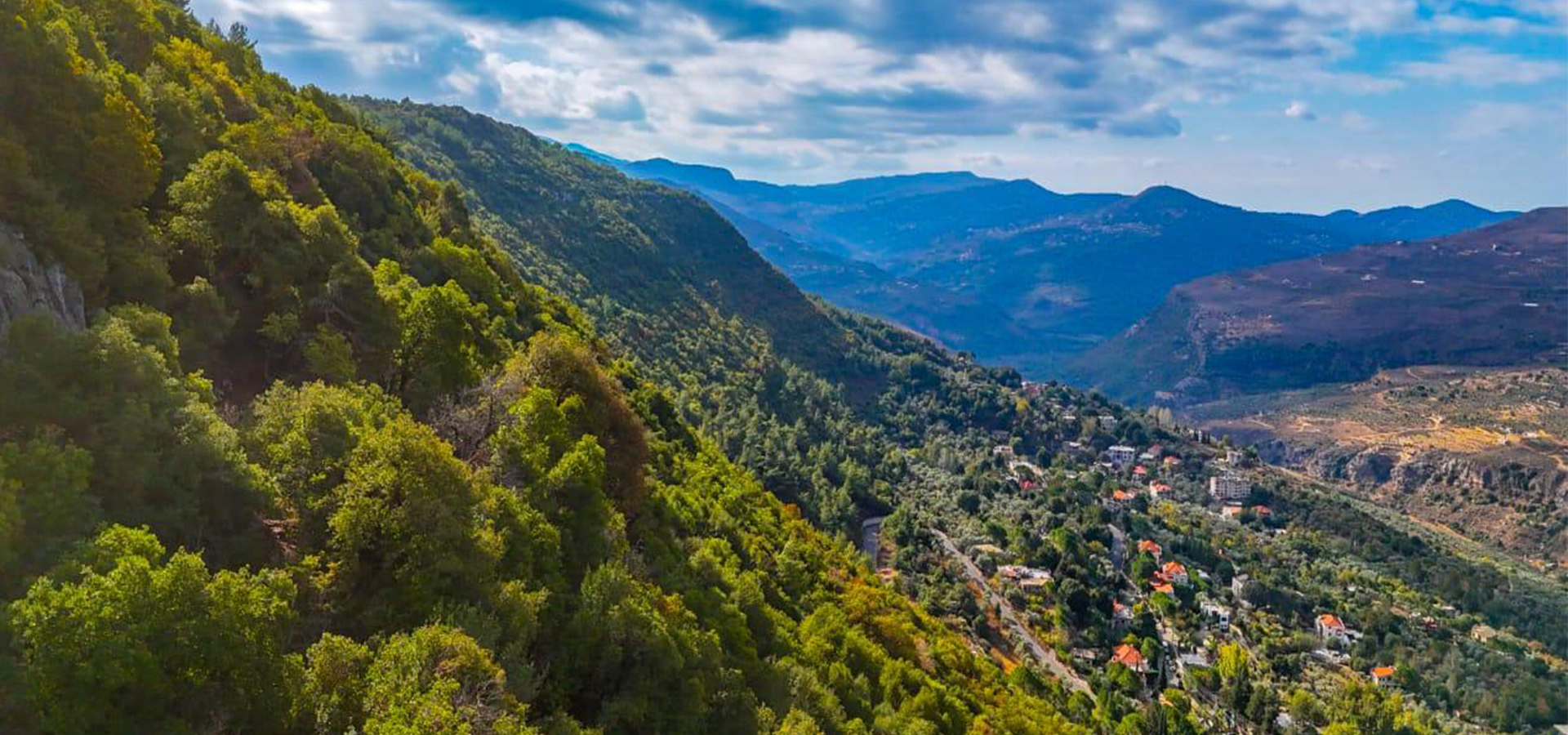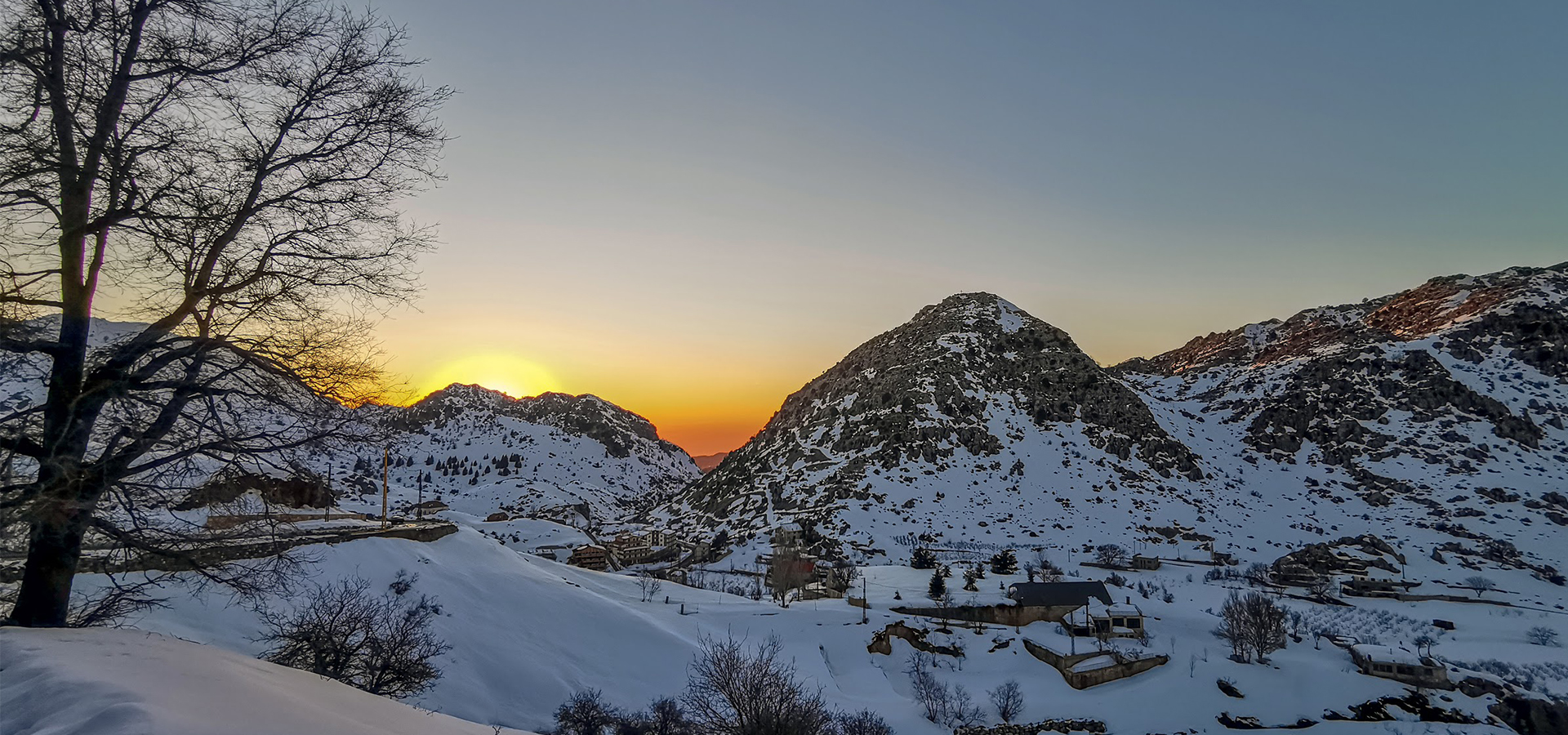
Why are mountains triangular in shape?
- January 12, 2021
- 0
There is this favorite painting of every child, a triangular mountain which has a sun peeping through it, birds flying in the shape of small r, a small hut, and a tree. Well in all this, what amazes many of us is the triangular shape of the mountain. Has it ever bothered you, why mountains are triangular in shape and not circular or rectangular or any shape.
Strictly speaking, mountains aren’t triangular shaped, since a triangle is a two dimensional shape, and mountains are three dimensional. I suppose we could talk about cones, instead of triangles, maybe we could say their cross sections are often triangular. Do you know what a cross section is? A cross section is the open face you would get if you took a knife and sliced it in a perfectly straight line through the mountain. For example, if you cut an orange in half, the cross section would be a circle. If you cut a box in half, the cross section would be a rectangle. So maybe we could say that if you cut a mountain perpendicular to its ridge-line, you would most likely get something that is approximately a triangle shape.
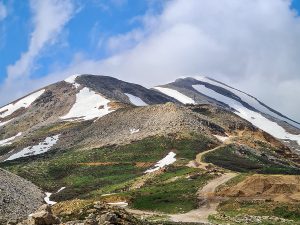
But your question remains: Why are mountains shaped this way?
Let me try to put this in a simple way. Kids like to play with the sand. One of the things they enjoy doing with the sand is “building towers. Their idea of building a tower is to pour sand in one place. The sand turns into a small pile, and that pile gets larger the more sand they put on it. It doesn’t take long before the sand that they are pouring on start sliding down the sides of the pile, making the pile not just taller, but also wider at the base, forming a cone.
Why does this happen?
Well, there are two forces acting on the particles of sand. One of them is the force of gravity pulling the sand toward the ground. The other is the force of friction. Friction is what keeps two objects from sliding past each other. Imagine sliding two pieces of paper against each other, then imagine sliding two pieces of sandpaper against each other. Sliding the sandpaper will be harder to do, because of the roughness of the two pieces of paper. We say that there is more friction between them.
These two forces are competing against each other. The force of gravity is pulling the sand down, while the force of friction is holding it in place. The amount of gravitational force which causes motion varies depending on the slope (or angle) of the surface on which the particle of sand is resting. Thus, if the pile is steep, gravity outweighs friction, but if the angle is shallow, friction wins. Therefore, as kids pour that sand, once it has piled up to the point that gravity outweighs friction, the sand starts sliding down the side, until the base has spread out enough that the slope is shallow again, and friction outweighs gravity once more.
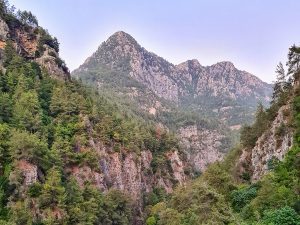
Hopefully, after that explanation, you’re thinking to yourself, “Yeah, but the mountains weren’t formed by pouring sand out of the sky!”
Right you are! Mountains are formed by different processes than pouring sand. In fact, if you’ve ever been on a mountain, you know that in many cases, they are made of mostly rock, not sand. Mountains are formed by tectonic forces, earthquakes, and even volcanic eruptions. While these forces are in play, the same principles of friction and gravity still hold true, resulting in the familiar triangle shape.
And once a mountain is formed, it is subject to forces of erosion – rain washing the soil away, landslides, crumbling rocks, etc. And these forces function in similar ways to what was described above. The steeper a mountain is, the more heavily it is affected by erosion, leading, over time, to a generally triangular shape.
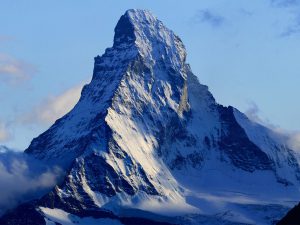
When it comes to the glaciated mountains, the serrate ridges can give them conical shape. This is formed when adjacent critiques on the opposite side of the same mountain are enlarged. It leads to the formation of sharp ridges. When 3 or more cliques come together or intersect the mountain is called as a horn.







